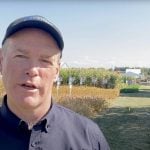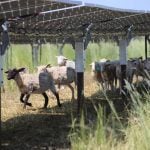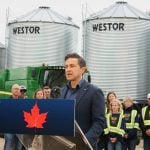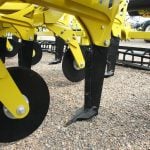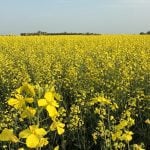Ammonium nitrate is no more.
Fertilizer companies have stopped making 34-0-0 after pressure from governments, insurers and corporate shareholders who fear terrorists might combine it with fuel to create explosives of the type used in the Oklahoma City bombing.
“We only retailed about 30,000 tonnes of the product per year, but it was a choice to stop retail production,” said Richard Downey of Agrium in Calgary.
Agronomists say the only practical replacements for 34-0-0 are a careful choice of other nitrogen sources and careful application.
Read Also

VIDEO: Green Lightning and Nytro Ag win sustainability innovation award
Nytro Ag Corp and Green Lightning recieved an innovation award at Ag in Motion 2025 for the Green Lightning Nitrogen Machine, which converts atmospheric nitrogen into a plant-usable form.
However, Downey said he hopes that his company’s ESN delayed dispersal nitrogen fertilizer will receive federal registration in time for next year.
Delays in approval mean so far it is only available for non-food crops such as forages, despite its widespread use in American cereal crops.
ESN is a polymer-coated form of dry urea that slowly dissolves in the soil over 20 to 40 days.
Alberta Agriculture agrologist Ross McKenzie said the product, like many polymer-coated fertilizers, can take too long to make their nitrogen component available to growing crops.
“(Ammonium nitrate) was ideal for top-dressing forages and winter cereals,” he said. “But if you broadcast it onto the surface during the growing season like ammonium nitrate, it will take even longer to become available to the plant. It could be very effective if it was seed placed with a crop like winter wheat, once it becomes available.”
Agronomists say ammonium nitrate could be applied at almost any time, with limited risk of gassing off into the environment.
The nitrogen was available at a near perfect pace: slow enough to minimize plant damage but fast enough to be available to a cereal crop during its critical yield-defining phase.
Agronomists say the other delayed application urea form of nitrogen, Agrotain, can replace 34-0-0, but also requires additional management.
Agrotain suppresses the activity of the urease enzyme in the soil that converts urea to ammonia. It is the ammonia that does most of the damage to young seedlings and is seen as a threat to the environment.
Agrotain is available as a coating treatment for granular 46-0-0 or dry urea, and as an additive to urea ammonium nitrate, UAN liquid.
McKenzie said Agrotain is also limited when applied into dry soil where rain hasn’t fallen for a month after application.
“And it can still cause damage when you dribble band it onto pastures,” he said.
Rigas Karamanos of Westco Fertilizer in Calgary said his research hasn’t found a significant advantage in applying coated product over proper applications of regular urea.
In the short-term, ammonium sulfate, or 21-0-0-24, can be a partial solution because it breaks down in a similar manner to 34-0-0. However, for every 70 pounds of nitrogen, it also delivers 80 lb. of sulfur.
McKenzie said it might work occasionally on forages, but would provide too much sulfate for most soils.
Karamanos said it may be useful in low acidity soils or for broadcasting onto fall planted cereals in the spring.
“It wouldn’t be good on high-acid soils of the Peace River country though … and its price is rising steadily,” he said.
“The loss of 34-0-0 is a small setback, but producers can make up for it with proper applications of broadcast or dribble banding in spring.”
Recent research by Karamanos shows that late fall broadcast applications of granular urea were highly effective once the soil temperature dropped below seven to 10 C.
McKenzie agreed this strategy will work for producers in the central and northern Prairies where sudden high temperatures in late winter due to Chinooks can result in losses to the environment.
“But it can be tough to manage for the farmer with 5,000 to 10,000 acres who wants to broadcast all of their fertilizer in the spring,” he said.
“They will need to consider more seed-placed fertilizer …. Research into urease inhibitor coated urea shows some real advantages.”
McKenzie and Karamanos say fall application of anhydrous ammonia is one of the best, lower cost options. The difficulty comes when NH3 is applied into wet soil in fall. Don Flaten of the University of Manitoba said risk of NH3 loss to the environment could be high in wet conditions.
“We’ve got saturated soils from the mountains to Ontario this year. Producers should consider applying any fertilizer as late as possible into moist ground, getting that soil temperature as low as practical to avoid losses to the atmosphere.”
Moisture destabilizes the ammonia before it can be fully bonded with the soil. Cindy Grant of Agriculture Canada in Brandon said many producers looking to add nitrogen to their cereals or canola during the growing season should consider switching to liquid urea systems.
“Nothing is going to replace 34-0-0, but it wasn’t the most popular source of N to begin with. But what it did, it did really well,” she said.








